Robot-Aided Magnetic Navigation System for Wireless Capsule Manipulation
Abstract
1. Introduction
2. Development of the C-Mag
2.1. Magnetic Torque and Force of the C-Mag
2.2. Structure of the C-Mag
2.3. Effect of the Core Tip
2.4. Effect of the Tilted Angle of the Core
2.5. Optimal Design of the C-Mag to Maximize the Generated Magnetic Field
2.6. Magnetic Field Generation of the C-Mag
3. Experiments
3.1. Construction and Verification of the C-Mag
3.2. Control Test
4. Discussion
Supplementary Materials
Author Contributions
Funding
Institutional Review Board Statement
Informed Consent Statement
Data Availability Statement
Conflicts of Interest
References
- Swain, P. Wireless Capsule Endoscopy. Gut 2003, 52 (Suppl. S4), iv48–iv50. [Google Scholar] [CrossRef]
- Swain, P. The Future of Wireless Capsule Endoscopy. World J. Gastroenterol. 2008, 14, 4142–4145. [Google Scholar] [CrossRef]
- Pan, G.; Wang, L. Swallowable Wireless Capsule Endoscopy: Progress and Technical Challenges. Gastroenterol. Res. Pract. 2011, 2012, 841691. [Google Scholar] [CrossRef] [PubMed]
- Munoz, F.; Alici, G.; Li, W. A Review of Drug Delivery Systems for Capsule Endoscopy. Adv. Drug Deliv. Rev. 2014, 71, 77–85. [Google Scholar] [CrossRef] [PubMed]
- Ciuti, G.; Menciassi, A.; Dario, P. Capsule Endoscopy: From Current Achievements to Open Challenges. IEEE Rev. Biomed. Eng. 2011, 4, 59–72. [Google Scholar] [CrossRef] [PubMed]
- Koulaouzidis, A.; Iakovos’s, D.K.; Karargyris, A.; Rondonotti, E. Wireless Endoscopy in 2020: Will It Still Be a Capsule? World J. Gastroenterol. 2015, 21, 5119–5130. [Google Scholar] [CrossRef]
- Amoako-Tuffour, Y.; Jones, M.L.; Shalabi, N.; Labbe, A.; Vengallatore, S.; Prakash, S. Ingestible Gastrointestinal Sampling Devices: State-of-the-Art and Future Directions. Crit. Rev. Biomed. Eng. 2014, 42, 1–15. [Google Scholar] [CrossRef]
- Fillon, S.A.; Harris, J.K.; Wagner, B.D.; Kelly, C.J.; Stevens, M.J.; Moore, W.; Fang, R.; Schroeder, S.; Masterson, J.C.; Robertson, C.E.; et al. Novel Device to Sample the Esophageal Microbiome—The Esophageal String Test. PLoS ONE 2012, 7, e42938. [Google Scholar] [CrossRef]
- Shokrollahi, P.; Lai, Y.P.; Rash-Ahmadi, S.; Stewart, V.; Mohammadigheisar, M.; Huber, L.-A.; Matsuura, N.; Zavodni, A.E.H.; Parkinson, J.; Diller, E. Blindly Controlled Magnetically Actuated Capsule for Noninvasive Sampling of the Gastrointestinal Microbiome. IEEE/ASME Trans. Mechatron. 2021, 26, 2616–2628. [Google Scholar] [CrossRef]
- Nam, J.; Lai, Y.P.; Gauthier, L.; Jang, G.; Diller, E. Resonance-Based Design of Wireless Magnetic Capsule for Effective Sampling of Microbiome in Gastrointestinal Tract. Sens. Actuators A Phys. 2022, 342, 113654. [Google Scholar] [CrossRef]
- Nejad, H.R.; Oliveira, B.C.M.; Sadeqi, A.; Dehkharghani, A.; Kondova, I.; Langermans, J.A.M.; Guasto, J.S.; Tzipori, S.; Widmer, G.; Sonkusale, S.R. Ingestible Osmotic Pill for In Vivo Sampling of Gut Microbiomes. Adv. Intell. Syst. 2019, 1, 1900053. [Google Scholar] [CrossRef]
- Yim, S.; Gultepe, E.; Gracias, D.H.; Sitti, M. Biopsy Using a Magnetic Capsule Endoscope Carrying, Releasing, and Retrieving Untethered Microgrippers. IEEE Trans. Biomed. Eng. 2014, 61, 513–521. [Google Scholar] [CrossRef]
- Lee, H.; Lee, D.; Jeon, S. A Two-Dimensional Manipulation Method for a Magnetic Microrobot with a Large Region of Interest Using a Triad of Electromagnetic Coils. Micromachines 2022, 13, 416. [Google Scholar] [CrossRef] [PubMed]
- Sharif, S.; Nguyen, K.T.; Bang, D.; Park, J.-O.; Choi, E. Optimization of Field-Free Point Position, Gradient Field and Ferromagnetic Polymer Ratio for Enhanced Navigation of Magnetically Controlled Polymer-Based Microrobots in Blood Vessel. Micromachines 2021, 12, 424. [Google Scholar] [CrossRef]
- Jeon, S.; Jang, G.; Choi, H.; Park, S. Magnetic Navigation System with Gradient and Uniform Saddle Coils for the Wireless Manipulation of Micro-Robots in Human Blood Vessels. IEEE Trans. Magn. 2010, 46, 1943–1946. [Google Scholar] [CrossRef]
- Choi, H.; Cha, K.; Choi, J.; Jeong, S.; Jeon, S.; Jang, G.; Park, J.; Park, S. EMA System with Gradient and Uniform Saddle Coils for 3D Locomotion of Microrobot. Sens. Actuators A Phys. 2010, 163, 410–417. [Google Scholar] [CrossRef]
- Kim, S.; Cho, M.; Im, S.; Yun, J.; Nam, J. Electrical Optimization Method Based on a Novel Arrangement of the Magnetic Navigation System with Gradient and Uniform Saddle Coils. Sensors 2022, 22, 5603. [Google Scholar] [CrossRef] [PubMed]
- Kummer, M.P.; Abbott, J.J.; Kratochvil, B.E.; Borer, R.; Sengul, A.; Nelson, B.J. OctoMag: An Electromagnetic System for 5-DOF Wireless Micromanipulation. IEEE Trans. Robot. 2010, 26, 1006–1017. [Google Scholar] [CrossRef]
- Diller, E.; Giltinan, J.; Sitti, M. Independent Control of Multiple Magnetic Microrobots in Three Dimensions. Int. J. Robot. Res. 2013, 32, 614–631. [Google Scholar] [CrossRef]
- Nam, J.; Lee, W.; Jung, E.; Jang, G. Magnetic Navigation System Utilizing a Closed Magnetic Circuit to Maximize Magnetic Field and a Mapping Method to Precisely Control Magnetic Field in Real Time. IEEE Trans. Ind. Electron. 2017, 65, 5673–5681. [Google Scholar] [CrossRef]
- Sikorski, J.; Heunis, C.M.; Franco, F.; Misra, S. The ARMM System: An Optimized Mobile Electromagnetic Coil for Non-Linear Actuation of Flexible Surgical Instruments. IEEE Trans. Magn. 2019, 55, 1–9. [Google Scholar] [CrossRef]
- Mahoney, A.W.; Abbott, J.J. Five-Degree-of-Freedom Manipulation of an Untethered Magnetic Device in Fluid Using a Single Permanent Magnet with Application in Stomach Capsule Endoscopy. Int. J. Robot. Res. 2016, 35, 129–147. [Google Scholar] [CrossRef]
- Lucarini, G.; Mura, M.; Ciuti, G.; Rizzo, R.; Menciassi, A. Electromagnetic Control System for Capsule Navigation: Novel Concept for Magnetic Capsule Maneuvering and Preliminary Study. J. Med. Biol. Eng. 2015, 35, 428–436. [Google Scholar] [CrossRef] [PubMed]
- Kim, M.-C.; Kim, E.-S.; Park, J.-O.; Choi, E.; Kim, C.-S. Robotic Localization Based on Planar Cable Robot and Hall Sensor Array Applied to Magnetic Capsule Endoscope. Sensors 2020, 20, 5728. [Google Scholar] [CrossRef]
- Gao, X.; Yan, S.; Li, B. Localization of Ferromagnetic Target with Three Magnetic Sensors in the Movement Considering Angular Rotation. Sensors 2017, 17, 2079. [Google Scholar] [CrossRef]
- Wang, Q.; Du, X.; Jin, D.; Zhang, L. Real-time ultrasound doppler tracking and autonomous navigation of a miniature helical robot for accelerating thrombolysis in dynamic blood flow. ACS Nano 2022, 16, 604–616. [Google Scholar] [CrossRef]
- Son, D.; Yim, S.; Sitti, M. A 5-D Localization method for a magnetically manipulated untethered robot using a 2-D array of Hall-effect sensors. IEEE/ASME Trans. Mechatron. 2016, 21, 708–716. [Google Scholar] [CrossRef]
- Ongaro, F.; Pane, S.; Scheggi, S.; Misra, S. Design of an electromagnetic setup for independent three-dimensional control of pairs of identical and nonidentical microrobots. IEEE Trans. Robot. 2019, 35, 174–183. [Google Scholar] [CrossRef]
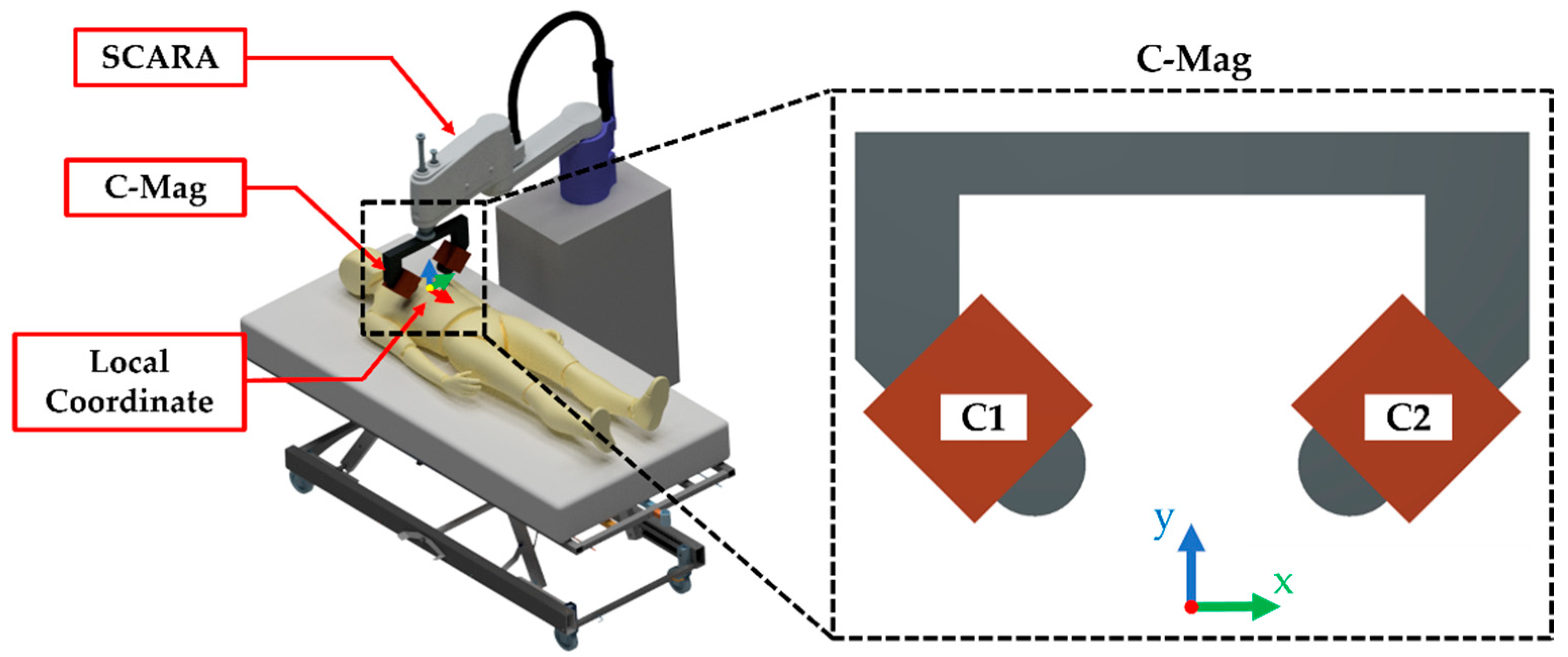

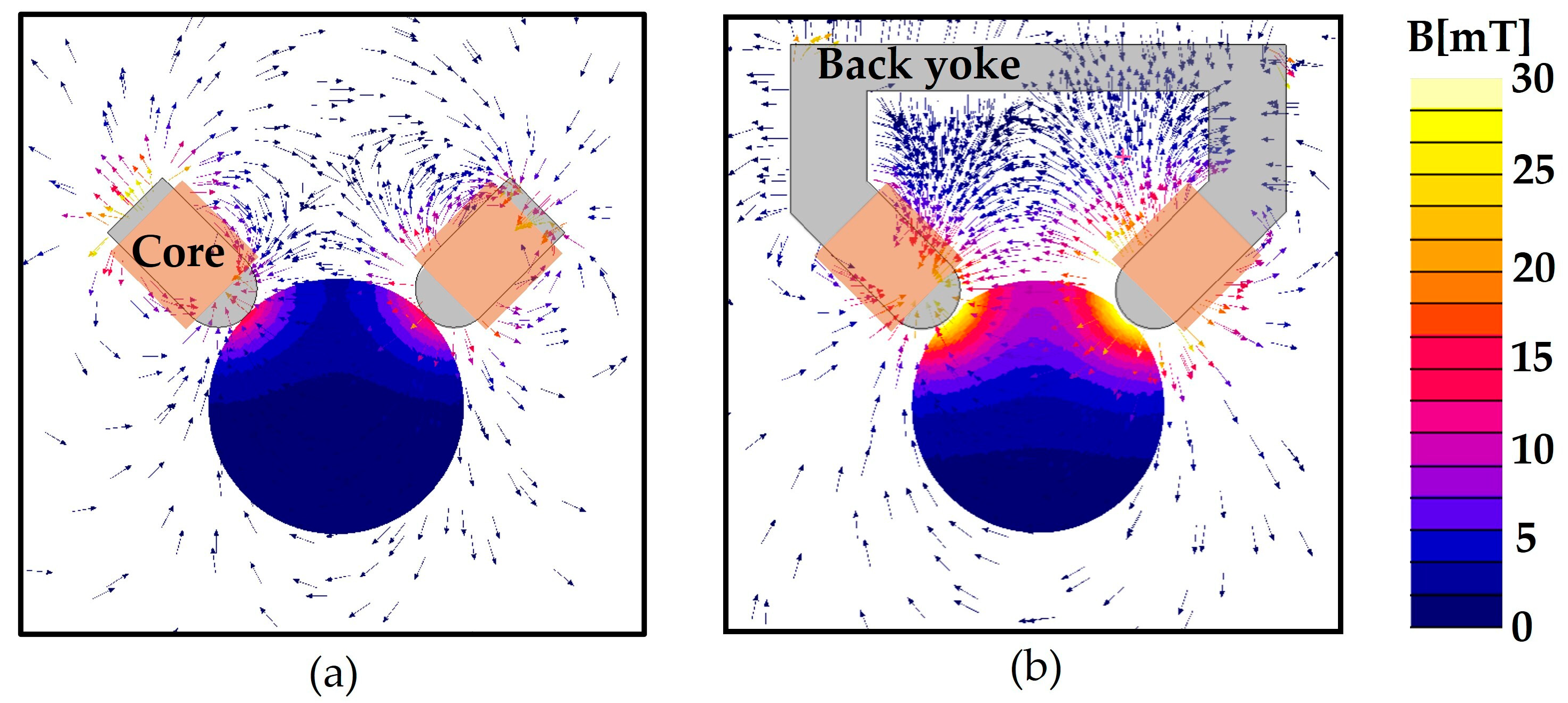
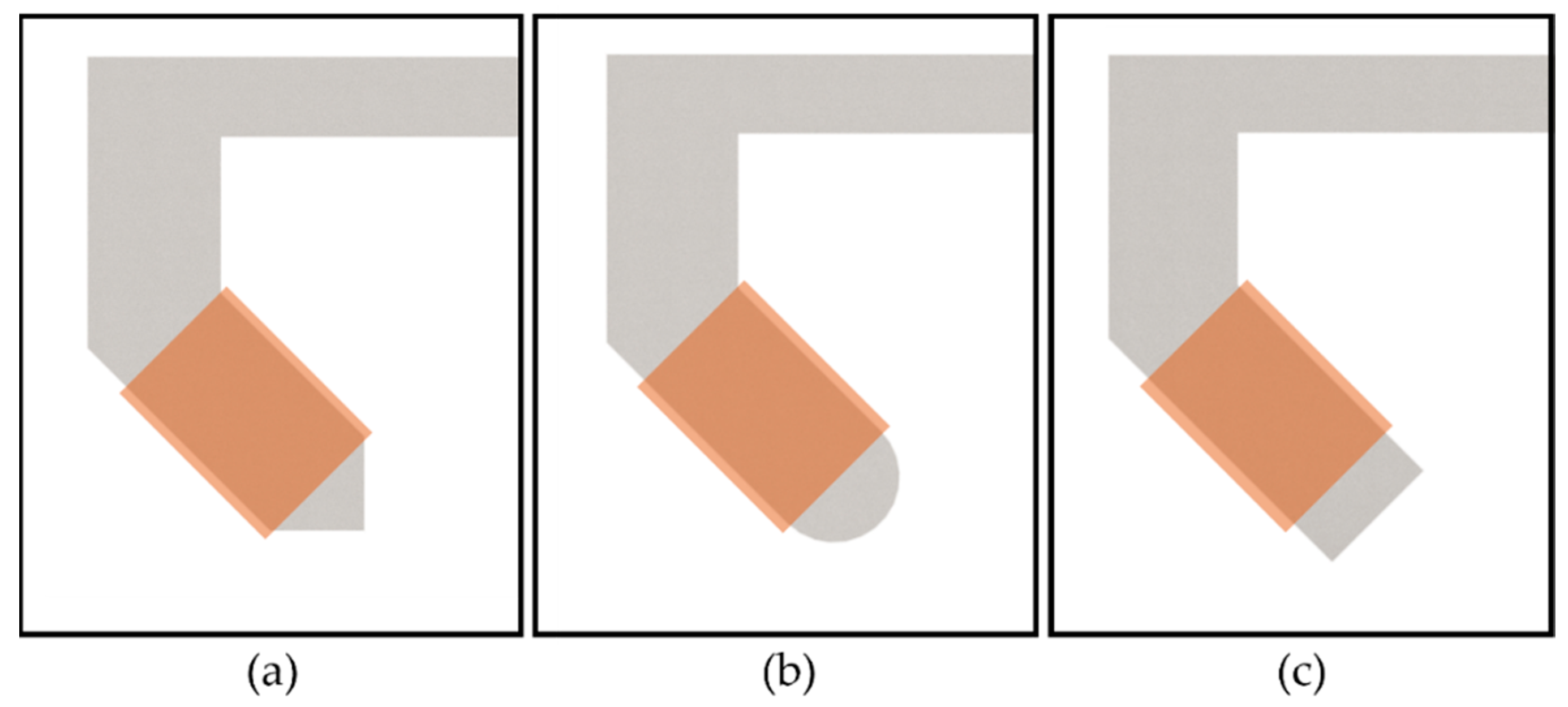

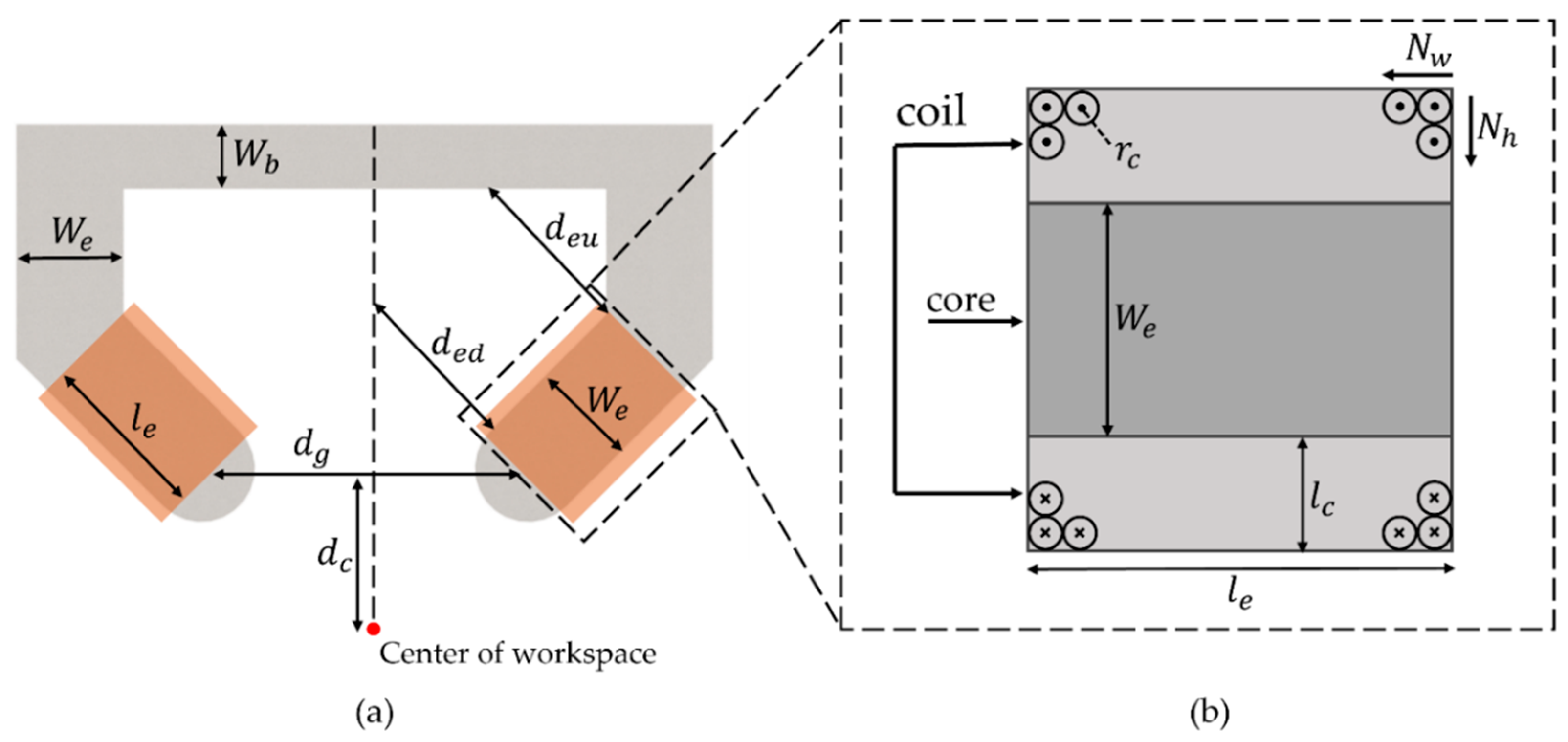
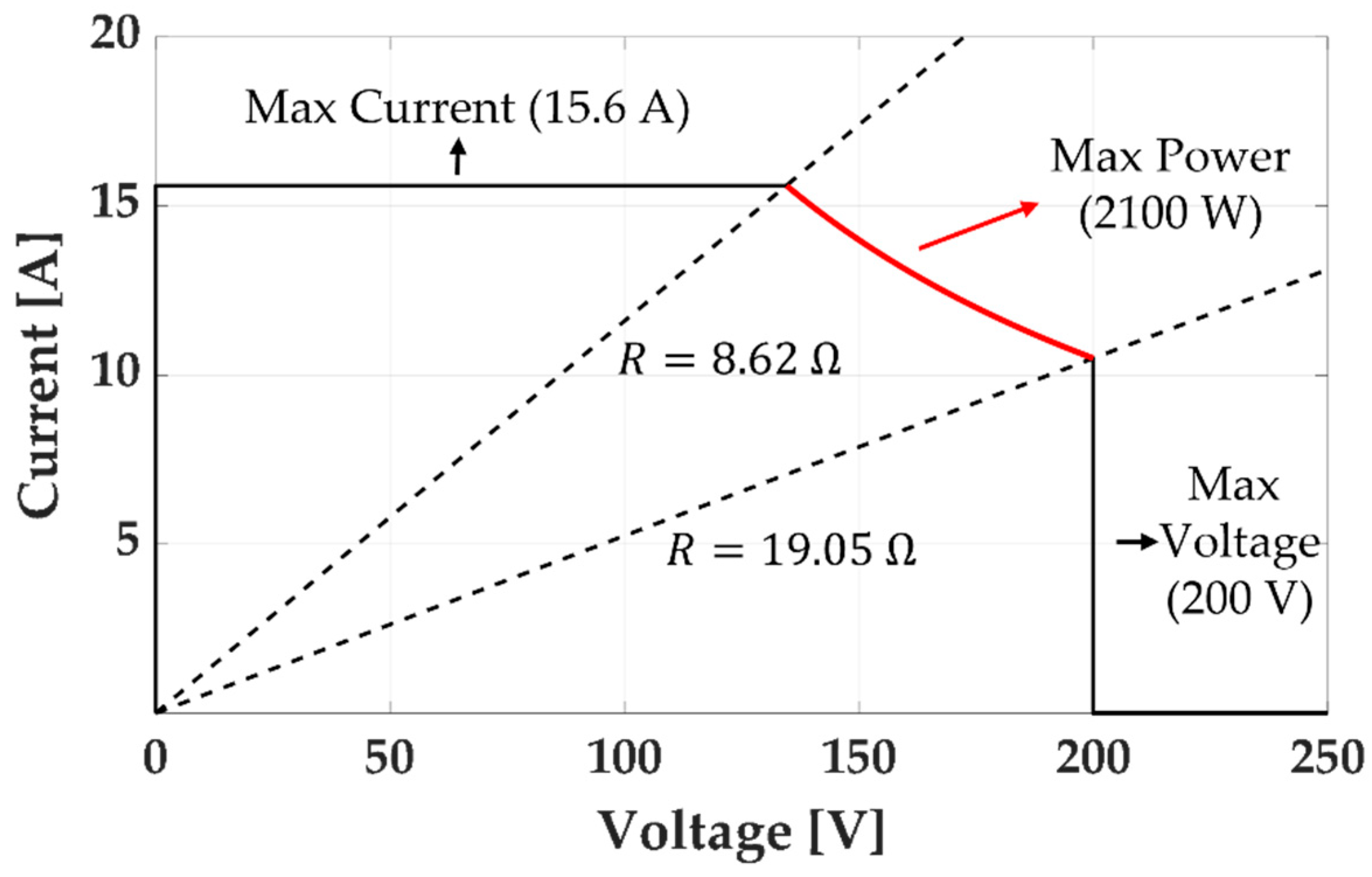
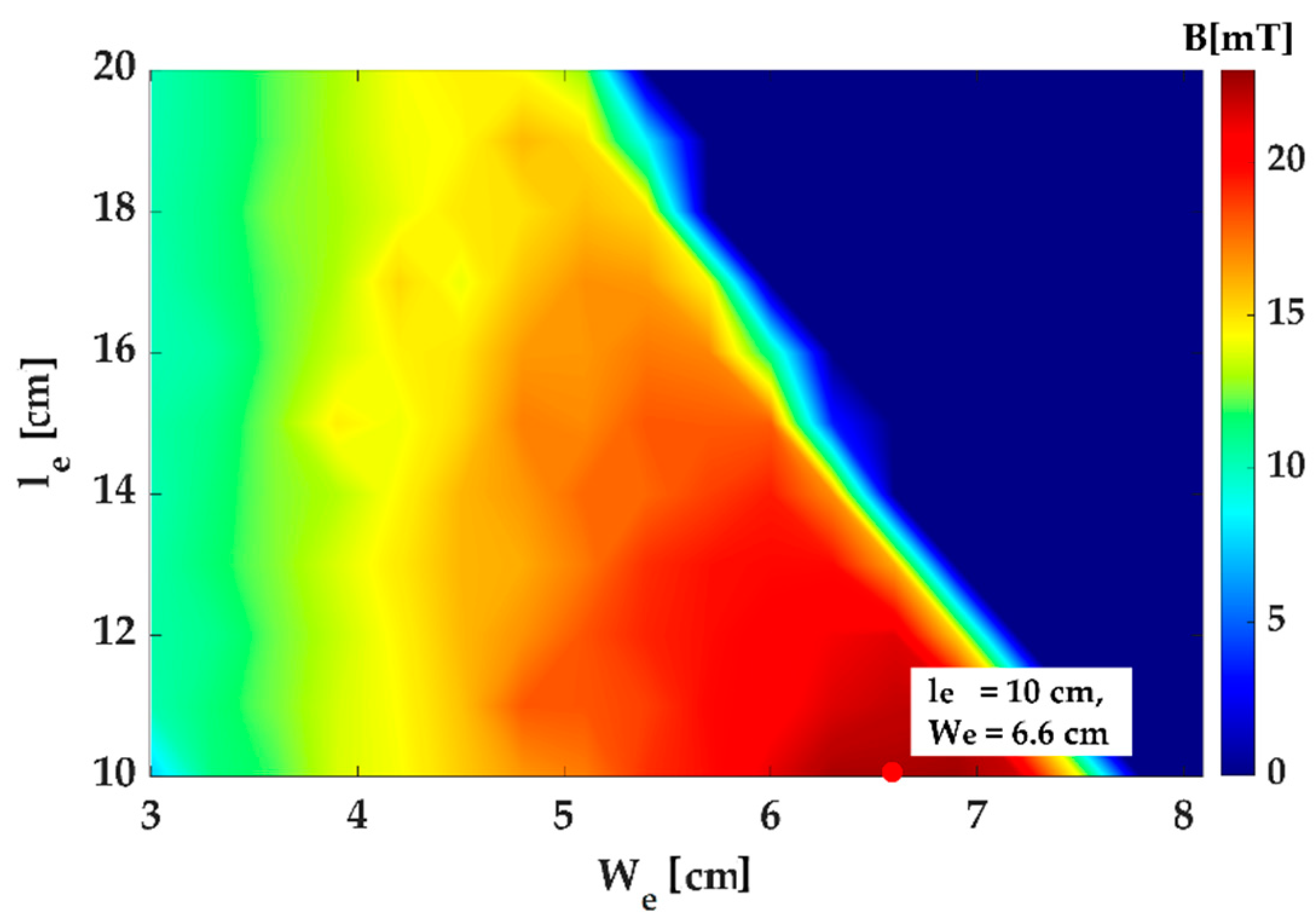
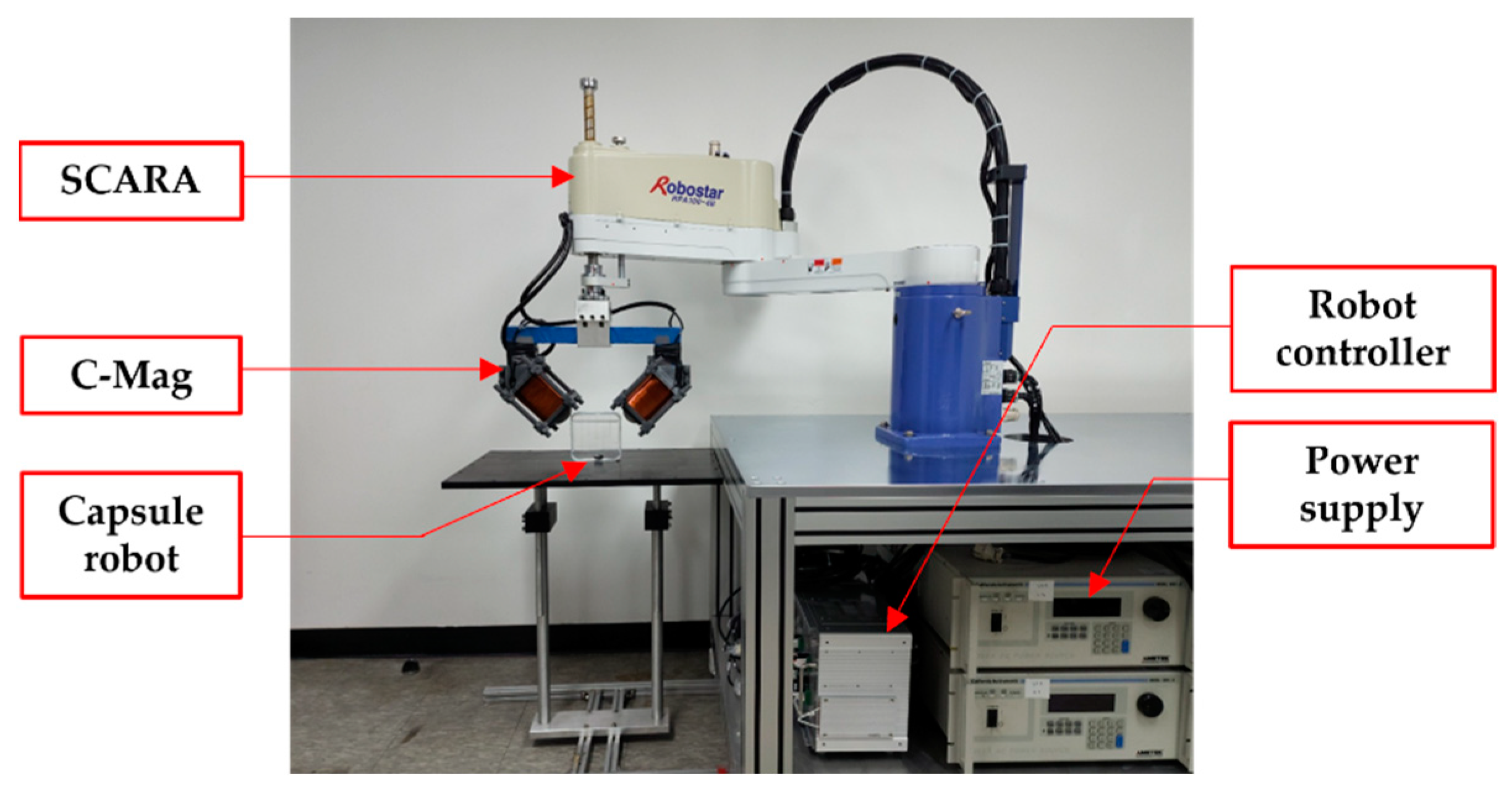
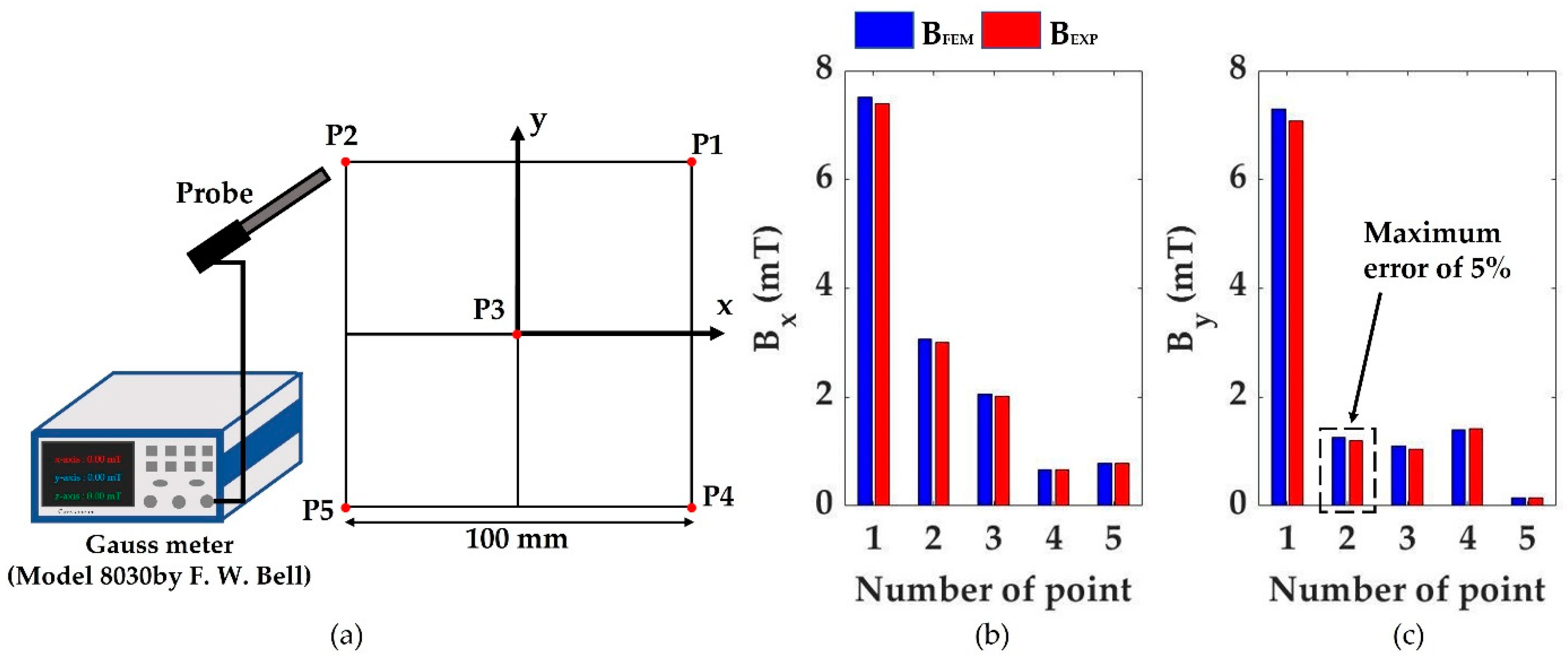
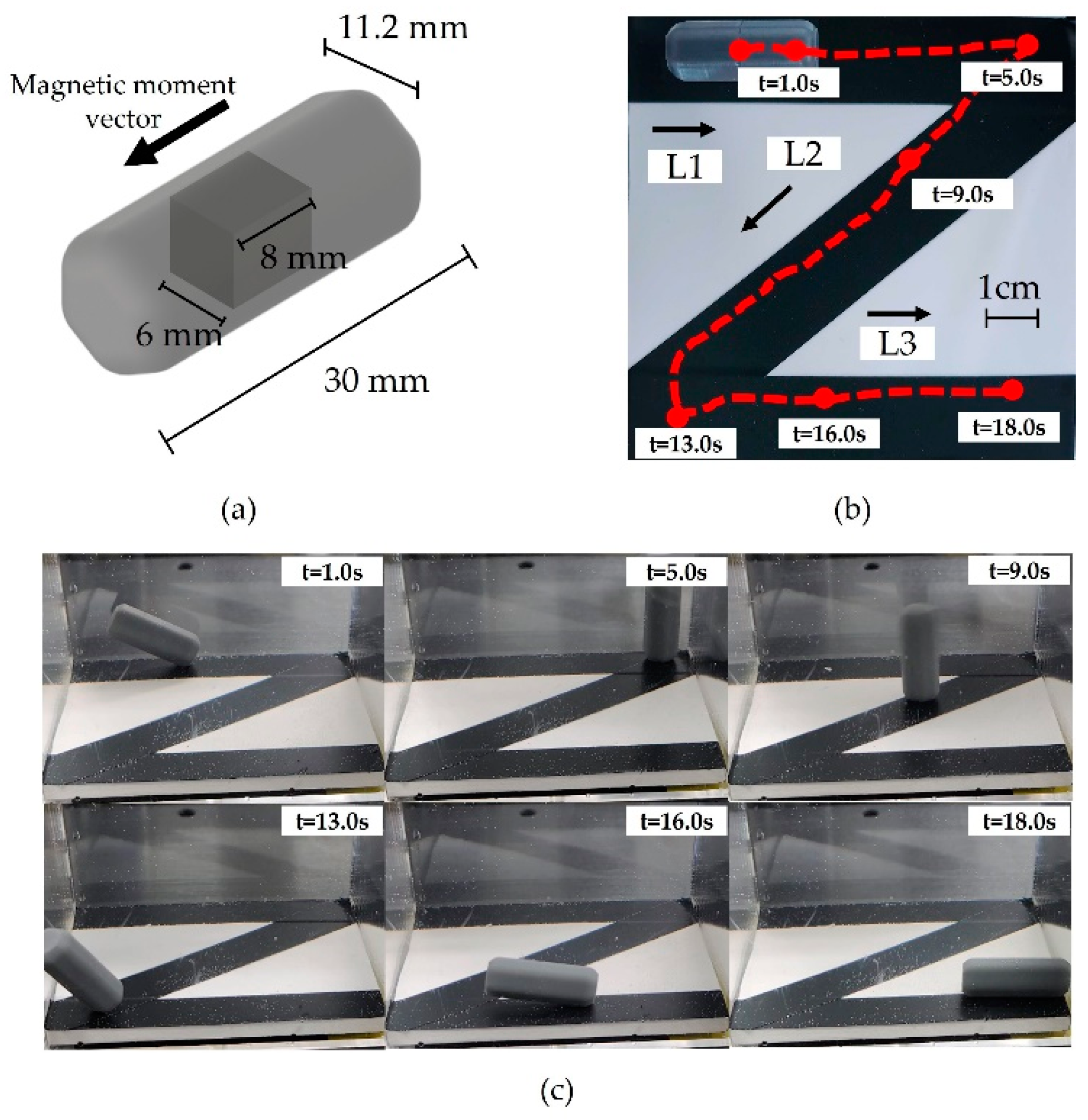
Disclaimer/Publisher’s Note: The statements, opinions and data contained in all publications are solely those of the individual author(s) and contributor(s) and not of MDPI and/or the editor(s). MDPI and/or the editor(s) disclaim responsibility for any injury to people or property resulting from any ideas, methods, instructions or products referred to in the content. |
© 2023 by the authors. Licensee MDPI, Basel, Switzerland. This article is an open access article distributed under the terms and conditions of the Creative Commons Attribution (CC BY) license (https://creativecommons.org/licenses/by/4.0/).
Share and Cite
Im, S.; Kim, S.; Yun, J.; Nam, J. Robot-Aided Magnetic Navigation System for Wireless Capsule Manipulation. Micromachines 2023, 14, 269. https://doi.org/10.3390/mi14020269
Im S, Kim S, Yun J, Nam J. Robot-Aided Magnetic Navigation System for Wireless Capsule Manipulation. Micromachines. 2023; 14(2):269. https://doi.org/10.3390/mi14020269
Chicago/Turabian StyleIm, Seyeong, Sungjun Kim, Joongho Yun, and Jaekwang Nam. 2023. "Robot-Aided Magnetic Navigation System for Wireless Capsule Manipulation" Micromachines 14, no. 2: 269. https://doi.org/10.3390/mi14020269
APA StyleIm, S., Kim, S., Yun, J., & Nam, J. (2023). Robot-Aided Magnetic Navigation System for Wireless Capsule Manipulation. Micromachines, 14(2), 269. https://doi.org/10.3390/mi14020269





_Chang.jpg)


